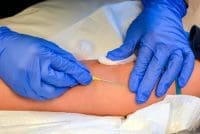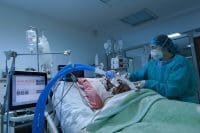As COVID-19 hit Georgia in early March 2020, Emory University System made the difficult decision to stop all surgeries and procedures unless they were deemed life-threatening or emergent. As a result, the post anesthesia care unit (PACU) and pre-operative holding area (POHA) were left with reduced staffing needs.
As the unit director for PACU/POHA at Emory University Hospital, I knew that COIVD-19 was quickly spreading and it was only a matter of time before the pandemic came to us. Because PACU and POHA staff have a wide range of previous clinical experience, I developed a plan to cross-train and deploy them to help the healthcare system and ensure staff maintained their work hours and positions.
Putting a plan in action
I used Kotter’s sense of urgency theory in my plan to float staff to areas of the hospital that matched their expertise. Kotter defines a sense of urgency as, “to act promptly and with intention make things happen efficiently and effectively. A true sense of urgency focuses on critical issues, not agendas…means doing what needs to be done immediately without being asked.” I needed to stir a sense of urgency among the staff to have them buy into the idea of floating.
I created that urgency by ensuring clear, consistent communication, providing directives specific to the task, and supporting staff to persevere in spite of the many challenges they faced. The response was positive, for example, one nurse wrote in an email, “I accept, let’s make a DIFFERENCE!”
I developed a list of all staff with previous experience in critical care, medical/surgical, phlebotomy, materials management, telehealth, emergency department, and respiratory care. Next, I began individually reaching out to colleagues in the ICUs, medical/surgical floors, and the emergency department. Together we created a quick orientation plan based on specific patient populations and unit and clinician needs. The number of orientation days for each nurse was individually determined to ensure staff members felt safe, comfortable, and able to function effectively at the bedside once patient care demanded their presence. The clinical nurse specialist for the ICUs worked with me and nursing informatics staff to train PACU/POHA nurses on electronic documentation specific to the ICU and inpatient floors.
The PACU shift nurse manager determined that a core team of five nurses were needed daily in PACU to provide care to patients who did undergo surgical procedures. The POHA shift nurse manager identified a core team of three nurses to care for emergent and life-threatening surgical cases and procedures. The core team rotated daily to ensure all staff were floated and trained fairly. In addition to training in other areas of the hospital, both PACU and POHA staff cross-trained to each other’s department. This was something that had been discussed previously but had not been fully executed until the pandemic.
Communication among the unit director and staff on both the base unit and deployed unit was crucial during this time. At the unit level, daily huddles continued and proved to be more important than ever as information changed rapidly. Frequent emails to PACU/POHA staff provided updates, including floating, airborne precautions, doffing and donning of personal protective equipment, supply inventory, and many other topics related to the pandemic. To ensure those deployed didn’t feel isolated, the PACU and POHA unit directors sent individual texts each week to check in and let staff know they had not been forgotten but were missed by those in the base unit. One nurse responded by writing, “Thank you for thinking about me, I miss you guys…they are treating me well.”
Our visual management boards in PACU and POHA served as a critical communication and change agent tool at daily huddles. Before the pandemic, PACU staff used the board inconsistently, but the pandemic emphasized the importance of visual communication and its effect on team building and problem solving. The board helped ensure that needed changes in daily practice were communicated to all staff and provided an opportunity to discuss changes, track changes made, and post results for tracking and trending purposes.
Positive results
PACU and POHA staff, including nurses, techs, and clerical workers, floated to all critical areas of the hospital that needed help at the onset of the pandemic. Even the unit director for both PACU and POHA trained and worked overnight as a nursing supervisor. What began as a way to help with patient care during a pandemic, resulted in two departments’ clinical staff having the ability to continue working rather than losing hours or being furloughed or laid off.
The entire PACU and POHA staff were fully trained to be deployed to other areas of the hospital. Ninety six percent of POHA staff and 64% of PACU were actually deployed within the hospital and system wide during the height of COVID-19, from March to May, 2020. All staff were back to working full time in the PACU and POHA by the start of June 2020.
Once the hospital system made the difficult decision to furlough staff in the fourth quarter of the fiscal year, only 20% of the PACU and POHA staff combined were furloughed (12% voluntarily; 8% involuntarily.) These data were appreciated by the UD and staff, given how many health care workers were currently unemployed both in Atlanta and nationwide.
Effective strategies
Communication was key to ensure staff buy-in and a clear understanding of the daily plan, and staff feedback was crucial to ensure patient and staff safety. Consistent and transparent communication among all unit directors at the hospital enhanced relationships and built trust across departments and staff during a time of crisis. Staying connected with staff while they worked in multiple settings was also critical. Daily phone calls, texts, email, and in-person visits with staff helped the team to stay connected to each other and their unit director.
Leading by example proved to be critical, especially for staff floating to ICUs and other inpatient units. As a unit director, serving as the night shift supervisor showed staff in PACU and POHA that “we are all in this together” and they are not alone when it comes to floating. Clinical staff learned how each member of the team can be most helpful and responsible during a time of crisis.
During times of rapid change, flexibility, and staff support help people to cope with things that are out of their control. Staff look to the leader to watch their response to the crisis at hand. Displaying behaviors of flexibility increases staff ability to be flexible as well. COVID-19 resulted in unprecedented changes that required caregiver reassurance both physically and emotionally. In order to provide the support staff needed required the UD to be flexible and consistently there for the team however needed.
Lessons learned
Collaboration, teamwork, transparency, and a plan are crucial during a pandemic. Effective, frequent communication with all members of the healthcare team ensures a culture of safety for patients and staff. Instilling a sense of urgency enabled the PACU and POHA staff to lessen the workload of their colleagues while providing safe patient care. Leaders in procedural areas where census fluctuates need to know where staff can be deployed, while supporting them to maintain the safety and wholeness of the team as well as the safety of patients and their families. Many lessons have been learned since the onset of COVID-19, and there are many more to come.
Kathleen Diatta is unit director, PACU/POHA, at Emory University Hospital in Atlanta.
References
Ballé M, Ballé F. Lead with Respect: A Novel of Lean Practice. Lean Enterprise Institute; 2014.
Cevik M, Bamford CGG, Ho A. COVID-19 pandemic—a focused review for clinicians. Clin Microbiol Infect. 2020;26(7):842-47.
Kotter JP. A Sense of Urgency. Harvard Business School Publishing; 2008.
McDermott D, Cox C. What impact has the coronavirus pandemic had on healthcare employment? August 17, 2020. healthsystemtracker.org
Press Ganey Associates, Inc. Building Workforce Trust; Lessons Learned from COVID-19. White paper. 2020; 2-14. pressganey.com/resources/white-papers/building-workforce-trust-lessons-from-covid-19
Ridgeway B. Lessons learned: Leading perioperative nursing through COVID-19. August 17, 2020. consultqd.clevelandclinic.org/lessons-learned-leading-perioperative-nursing-through-covid-19/
Whiteside D. Perioperative nurse leaders and professionalism. AORN J. 2016;104(2):134-41.
Womack JP, Jones DT. Lean Thinking: Banish Waste and Create Wealth in Your Corporation. Free Press; 2003.



















5 Comments. Leave new
Kathleen!!! I went back and read the article after a year and I am so proud to say that I worked for as my director!
Thank you Elizabeth. We are SO HAPPY you have joined our PACU/POHA family.
Great article Kathleen and clever use of resources!
Thank you so much Heather. I am glad that we are finally getting to the other side of the pandemic.
Awesome Job Kathleen!!!. A great presentation of the strategic plan and implementation. Proud to be a part of your team!!!